26 Pyramids and Cones
You may use a calculator throughout this module.
Pyramids
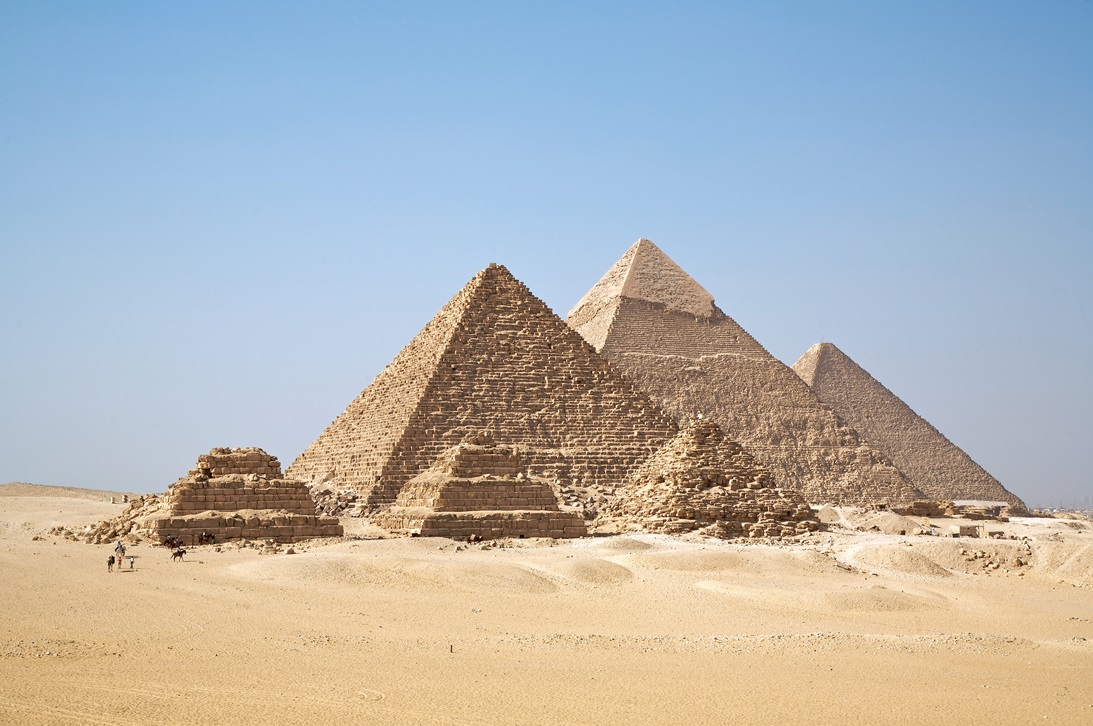
A pyramid is a geometric solid with a polygon base and triangular faces with a common vertex (called the apex of the pyramid). Pyramids are named according to the shape of their bases. The most common pyramids have a square or another regular polygon for a base, making all of the faces identical isosceles triangles. The height, ![]() , is the distance from the apex straight down to the center of the base. Two other measures used with pyramids are the edge length
, is the distance from the apex straight down to the center of the base. Two other measures used with pyramids are the edge length ![]() , the sides of the triangular faces, and the slant height
, the sides of the triangular faces, and the slant height ![]() , the height of the triangular faces.
, the height of the triangular faces.
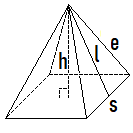
Volume of a Pyramid
In general, the volume of a pyramid with base of area ![]() and height
and height ![]() is
is
![]() or
or ![]()
If the base is a square with side length ![]() , the volume is
, the volume is
![]() or
or ![]()
Interestingly, the volume of a pyramid is ![]() the volume of a prism with the same base and height.
the volume of a prism with the same base and height.
Exercises
- A pyramid has a square base with sides
 centimeters long, and a height of
centimeters long, and a height of  centimeters. Find the volume of the pyramid.
centimeters. Find the volume of the pyramid.
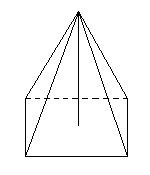
- The Great Pyramid at Giza has a height of
 meters and a square base with sides
meters and a square base with sides  meters long.[1] Find the volume of the pyramid.
meters long.[1] Find the volume of the pyramid.
The lateral surface area (![]() ) of a pyramid is found by adding the area of each triangular face.
) of a pyramid is found by adding the area of each triangular face.
Lateral Surface Area of a Pyramid
If the base of a pyramid is a regular polygon with ![]() sides each of length
sides each of length ![]() , and the slant height is
, and the slant height is ![]() , then
, then
![]() or
or ![]()
If the base is a square, then
![]()
The total surface area (![]() ) is of course found by adding the area of the base
) is of course found by adding the area of the base ![]() to the lateral surface area. If the base is a regular polygon, you will need to use the techniques we studied in Module 23.
to the lateral surface area. If the base is a regular polygon, you will need to use the techniques we studied in Module 23.
Total Surface Area of a Pyramid
![]()
If the base is a square, then
![]()
Exercises
- A pyramid has a square base with sides
 centimeters long, and a slant height of
centimeters long, and a slant height of  centimeters. Find the lateral surface area and total surface area of the pyramid.
centimeters. Find the lateral surface area and total surface area of the pyramid.
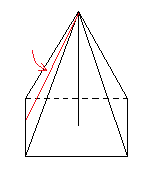
- The Great Pyramid at Giza has a slant height of
 meters and a square base with sides
meters and a square base with sides  meters long. Find the lateral surface area of the pyramid.
meters long. Find the lateral surface area of the pyramid.
Cones
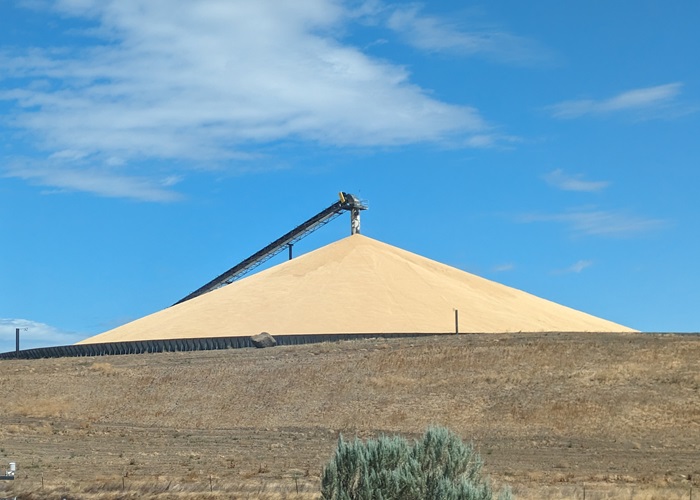
A cone is like a pyramid with a circular base. You may be able to determine the height ![]() of a cone (the altitude from the apex, perpendicular to the base), or the slant height
of a cone (the altitude from the apex, perpendicular to the base), or the slant height ![]() (which is the length from the apex to the edge of the circular base). Note that the height, radius, and slant height form a right triangle with the slant height as the hypotenuse. We can use the Pythagorean theorem to determine the following equivalences.
(which is the length from the apex to the edge of the circular base). Note that the height, radius, and slant height form a right triangle with the slant height as the hypotenuse. We can use the Pythagorean theorem to determine the following equivalences.
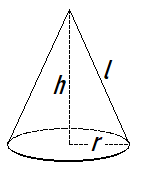
The slant height ![]() , height
, height ![]() , and radius
, and radius ![]() of a cone are related as follows:
of a cone are related as follows:
![]()
![]()
![]()
Just as the volume of a pyramid is ![]() the volume of a prism with the same base and height, the volume of a cone is
the volume of a prism with the same base and height, the volume of a cone is ![]() the volume of a cylinder with the same base and height.
the volume of a cylinder with the same base and height.
Volume of a Cone
The volume of a cone with a base radius ![]() and height
and height ![]() is
is
![]() or
or ![]()
Exercises
- The base of a cone has a radius of
 centimeters, and the vertical height of the cone is
centimeters, and the vertical height of the cone is  centimeters. Find the volume of the cone.
centimeters. Find the volume of the cone.
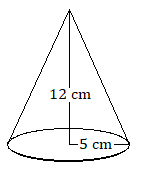
- The base of a cone has a diameter of
 feet, and the slant height of the cone is
feet, and the slant height of the cone is  feet. Find the volume of the cone.
feet. Find the volume of the cone.
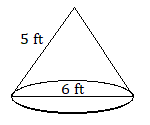
For the surface area of a cone, we have the following formulas.
Surface Area of a Cone
![]()
![]()
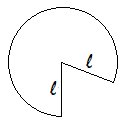 It’s hard to explain the
It’s hard to explain the ![]() formula in words, but here goes. The lateral surface of a cone, when flattened out, is a circle with radius
formula in words, but here goes. The lateral surface of a cone, when flattened out, is a circle with radius ![]() that is missing a wedge. The circumference of this partial circle, because it matched the circumference of the circular base, is
that is missing a wedge. The circumference of this partial circle, because it matched the circumference of the circular base, is ![]() . The circumference of the entire circle with radius
. The circumference of the entire circle with radius ![]() would be
would be ![]() , so the part we have is just a fraction of the entire circle. To be precise, the fraction is
, so the part we have is just a fraction of the entire circle. To be precise, the fraction is ![]() , which reduces to
, which reduces to ![]() . The area of the entire circle with radius
. The area of the entire circle with radius ![]() would be
would be ![]() . Because the partial circle is the fraction
. Because the partial circle is the fraction ![]() of the entire circle, the area of the partial circle is
of the entire circle, the area of the partial circle is ![]() .
.
Exercises
- The base of a cone has a diameter of
 feet, and the slant height of the cone is
feet, and the slant height of the cone is  feet. Find the lateral surface area and total surface area of the cone.
feet. Find the lateral surface area and total surface area of the cone.

- The base of a cone has a radius of
 centimeters, and the vertical height of the cone is
centimeters, and the vertical height of the cone is  centimeters. Find the lateral surface area and total surface area of the cone.
centimeters. Find the lateral surface area and total surface area of the cone.


